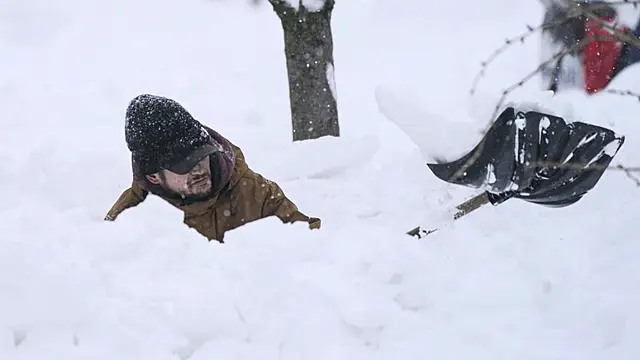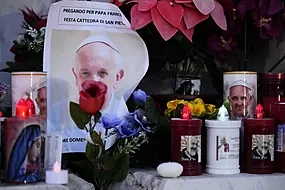Storm-battered Buffalo was braced for fresh snow while still counting fatalities and trying to recover from the deadliest storm in western New York in at least two generations.
Mayor Byron Brown’s office announced seven additional storm-related deaths on Tuesday, bringing Buffalo’s total to 27, along with at least seven suburban fatalities.
The toll surpasses that of the historic blizzard of 1977, blamed for killing as many as 29 people in a region known for harsh winter weather.

The National Weather Service predicted that up to two inches (2.5cm to 5cm) of snow could fall on Tuesday in Erie County, which includes Buffalo, the second-largest city in New York, with about 275,000 residents.
While this is nothing like the storm that dropped more than four-feet of snow in some places starting on Christmas Eve, “any additional snowfall that Buffalo may continue to have today is going to be impactful”, said lead forecaster Bob Oravec.
“The biggest impact is going to be how it hinders the removal of the previous snowfall,” he said.
The rest of the United States was also reeling from the ferocious winter storm, with at least an additional two dozen deaths reported in other parts of the country, and power cuts in communities from Maine to Washington state.

In Buffalo, the dead people were found in cars, homes and snowbanks. Some had died while shovelling snow, others when emergency crews could not respond in time to medical crises.
County Executive Mark Poloncarz called the blizzard “the worst storm probably in our lifetime”, even in an area known for heavy snow.
President Joe Biden offered federal assistance on Monday to hard-hit New York, while Governor Kathy Hochul toured the aftermath in Buffalo — her hometown — and called the blizzard “one for the ages”. Almost every fire engine in the city had become stranded on Saturday, she said.
Ms Hochul, a Democrat, noted that the storm had come a little over a month after the region was inundated with previous “historic” snowfall.
Between the two storms, snowfall totals were not far off the 95.4 inches (242cm) the area normally sees in an entire winter season.

The National Weather Service said the snow total at Buffalo Niagara International Airport stood at 49.2 inches (1.25 metres) on Monday. Officials said the airport would be shut through to Wednesday morning.
Nearly 2,900 domestic and international US flights had been cancelled on Tuesday, according to the tracking site FlightAware.
Meanwhile, the US Department of Transportation said it would look into flight cancellations by Southwest Airlines that had left travellers stranded at airports across the country amid the winter storm. Many airlines were forced to cancel flights, but Southwest was by far the most impacted.
State and military police were later sent to keep people off Buffalo’s snow-choked roads.
Amid some signs of progress — suburban roads reopened and emergency response service was restored — Mr Poloncarz warned that police would be stationed at entrances to Buffalo and at major intersections to enforce a ban on driving within the city.
Speaking at a news conference, he said: “Too many people are ignoring the ban.”







